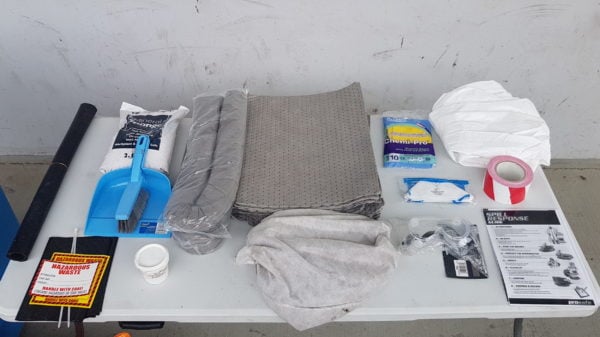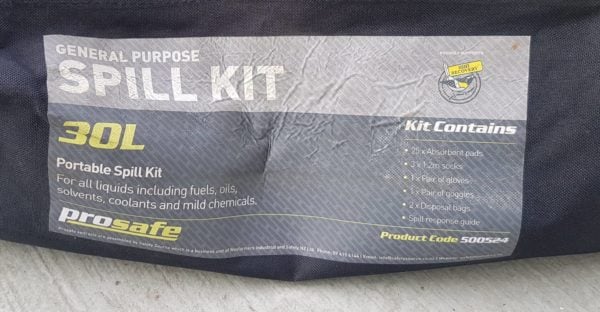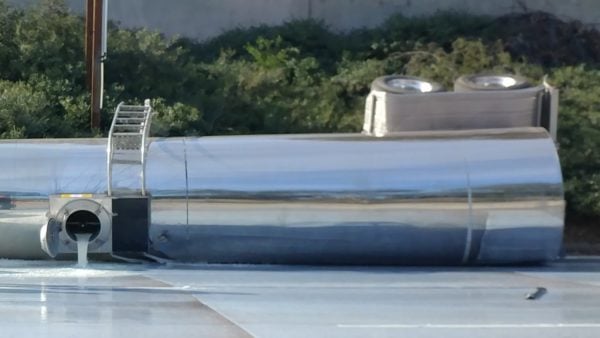Drivers that are carrying hazardous chemicals where there is a risk of spilling should carry a spill kit in their vehicle. The purpose of a spill kit is to stop spilt chemicals entering stormwater drains or somewhere they’ll soak into the ground and get into groundwater. You must do a spill kit course so that you know how to stay safe when using a spill kit.
You can purchase a generic spill kit for general purpose liquids, hazardous chemicals, biohazards or oil from stores that sell safety products. For cars and trucks they usually come in a small bag or plastic crate. They should be secured somewhere it’s easy to reach them.
What does a spill kit contain?
A spill kit is a combination of materials designed to absorb or block chemicals. Spill kits usually contain 3 categories of standard items:
- PPE – usually gloves and goggles, and occasionally overalls or a coverall
- Absorbent and/or containing materials – usually pads and some kind of synthetic or natural loose granular material (kitty litter-type product), and sometimes long absorbent socks or non-absorbent booms
- Disposal materials – usually a plastic bag with either cable ties or tape, and often a dustpan and brush
There will be some instructions how to use the kit.
Some kits will come with specialist products such as drum plug putty, bunding or absorbent pillows. For your specific requirements, you may need to add items to the kit, such as:
- Respirator or face mask
- Boots
- Large shovel
- Additional absorbent materials
- Chemicals to neutralise acids or alkalis
- Degreasers to clean up oil
- Cones, barriers, warning signs and danger tape
- Drain cover
- Drum plug putty
- Booms

What sort of drivers might need to carry a spill kit?
- Any driver carrying containers of hazardous liquids
- Any driver working with hazardous liquid carried on the vehicle (e.g. using chemicals in their role or decanting hazardous liquids from the vehicle to storage areas or another vehicle)
- Drivers working where a spill kit is part of complying with local laws regarding environmental safety, in relation to the chemicals they are carrying.
As the driver (and the driver’s company) are responsible for any spilled chemicals entering the environment, having a spill kit on-hand is a good idea.
What size spill can you clean up?
Spill kits for vehicles are only designed to clean up small spills of up to 30 litres – the volume will be stated on the kit.

There isn’t a spill kit large enough to clean up a fuel tanker’s spill as it would be as big as the tanker itself; you’d need to call in a specialist team.

In those cases, your spill kit can be used to protect areas, for example, block off drains or contain spills, rather than clean up the entire spill.
How might spills occur from a vehicle?
Spills can occur through damage to packaging on a vehicle, but they can also happen due to mechanical failure, for example, a ruptured brake line, and through overfilling a fuel tank.

